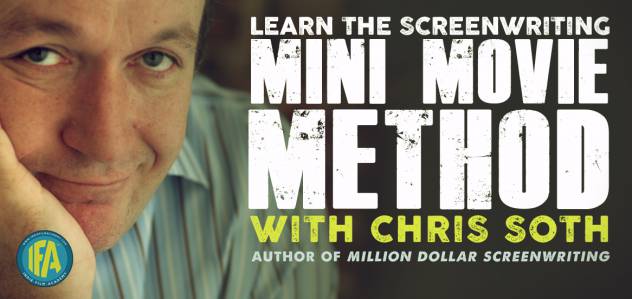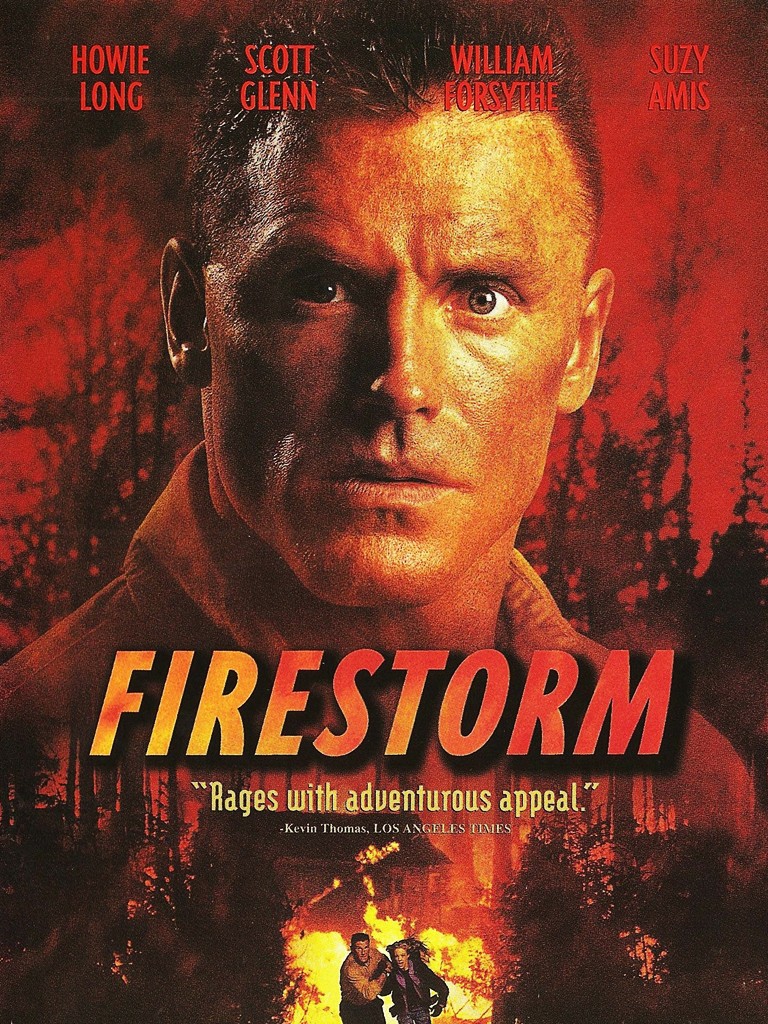Chris Soth is well known for selling his first script, the 1998 feature film Firestorm, for $750,000.00. How did he do it?
Chris Soth, script consultant and author of Million Dollar Screenwriting, was mentored by David Howard, founder of the Graduate Screenwriting program at USC. That’s where Chris first developed his ‘architectural’ style of sequencing a script, globally known today as, The Mini Movie Method.
The MMM is a structural format that insures tension, equaling hope vs. fear, for every 15 pages of story. This keeps the script from getting boring, or wandering off into confusion, that can happen so often in the ‘ 3 Act’ concept, developed by Aristotle about 2400 years ago.
A lot has changed since then (the invention of motion pictures), that play on 15 minute reels. Chris’s idea was to make a mini movie for each reel, each with its own tension supporting the main story. Firestorm, a fast-paced thrilling adventure, made Chris a sensation in the movie industry.
What keeps you excited and motivated in this volatile business?
Chris Soth
I stay involved with all aspects of the industry. I’m an actor, director, producer, consultant, and of course – screenwriter. I’ve written over 40 screenplays. Consulting with writers and filmmakers is an aspect that evolved naturally for me. The industry is always changing, but the need for a great story remains constant. I love assisting writers in breaking their story idea, and guiding that story to be maximum entertainment.
Please explain why your method is considered architectural?
Chris Soth
After the creation of your initial idea, you step back and create your plot points.
The plot points provide a solid framework, a structure, to build on. It’s very similar to the plans an architect gives to a builder. He first starts with a ‘genre’, like it’s a house or a building, a rom-com or crime thriller.
He expands that into a concept, ‘The house will fit seamlessly into the landscape’, or ‘It will be fluid and open with a gathering space in the middle for people to meet and socialize’, ‘A detective discovers the woman he has been dating is a suspect in a serial killer investigation’. It is simple problem solving.
Once you have your structure, your framework, you begin to layer in your tension. It’s important to brainstorm and experiment with different techniques. You might want to try out several ideas for each plot point, such as: a mislead and reveal, or a unique dilemma. If your structure is in place, you can try out different conflicts and interest techniques without veering off course.
Why are mentors and consultants so vital to a screenwriter’s success?
Chris Soth
It’s not that you must have a mentor or consultant, but they can take the fear out of the journey, and let the writer do what he does best – write. They help provide a valuable sounding board to work out ideas and to spot weak points, so by the time the script gets into the hands of a producer, the logline or first page says “this is the work of a professional”. There is very little room for amateurs in this business.
What is trending for production in film these days?
Chris Soth
The low budget feature. This is why the MMM is such a valuable tool right now, it adjusts to fit your needs. Creating a story using just one room could get tedious and boring, but when you have your plot points ahead of time, you can remain focused on the fates of the people in the room. It can be used for a short film, which many directors are creating at this time to show their potential and ability before tackling a full feature. Short stories that are filled with tension are in demand right now.
You can pick up Chris’s book, Million Dollar Screenwriting at Amazon.com, or contact Chris directly on Facebook at www.ChrisSoth.com.
Thanks Chris!




Leave Us Your Comments.